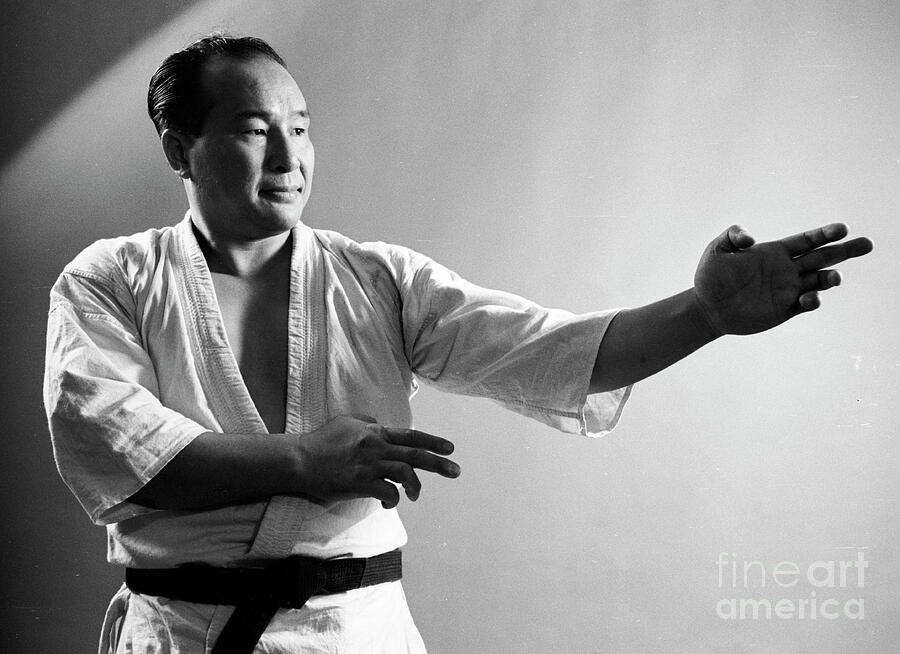Step into the captivating realm of martial arts, where dedication, discipline, and determination define the journey of a warrior. This post will delve deep into the lives and contributions of renowned karate legends, whose phenomenal prowess has left an indelible mark in the annals of martial arts history. Their remarkable stories are bound to inspire, as we embark on this enlightening exploration of greatness.
Karate, a discipline that has been passed down for centuries, transcends beyond mere self-defense. It symbolizes a way of life, a journey towards self-realization, and a code of conduct that reflects respect, honor, and humility. Some individuals have turned this practice into an art form, leaving behind a legacy for future generations to cherish and follow.
Unravel the fascinating chronicles of these martial artists, their humble beginnings, their grueling struggles, their triumphant victories, and their impactful contributions. Discover how they shattered conventions, pushed boundaries, and set standards, thus shaping the world of martial arts as we know it today.
This intriguing exploration will span across various styles of karate, from Shotokan to Goju-Ryu, from Wado-Ryu to Shito-Ryu. It’s a homage to those who have dedicated their lives to this noble practice, demonstrating unparalleled skill, unwavering commitment, and unyielding spirit.
Whether you’re an ardent karate enthusiast, a martial arts practitioner, or simply intrigued by the enchanting world of karate, this detailed elucidation serves as a wealth of knowledge and inspiration. Embark on this journey through time, tracing the footsteps of karate legends and their impactful contributions, shaping a legacy that continues to inspire martial artists worldwide.
Gichin Funakoshi: The Father of Modern Karate
Gichin Funakoshi (1868-1957), also known as “The Father of Modern Karate,” had a significant impact on the spread of karate worldwide. Trained in both Shorin-ryu and Shorei-ryu styles of Okinawan Karate, Funakoshi worked diligently to unify these distinct styles into what we now recognize as Shotokan Karate. His unique system focuses on strength, speed, and a linear attack-defense, significantly differentiating it from other karate styles.
Funakoshi’s innovative teaching methods, including the first-ever written karate training manual, “Ryukyu Kempo: Karate,” have been a major contributor to the global recognition and respect for karate. He emphasized not just the physical aspects, but also the philosophical aspects, such as discipline and respect.
Key contributions:
- Standardization and unification of Okinawan Karate styles.
- Publication of the first-ever karate training manual.
- Spread of Karate to mainland Japan and subsequently the world.
Mas Oyama: The Founder of Kyokushin Karate
Masutatsu Oyama (1923-1994), better known as Mas Oyama, was a karate master who developed the Kyokushin Karate style. His style is globally recognized for its emphasis on full contact sparring and physical toughness. Oyama’s Kyokushin Karate incorporates elements from various martial arts, resulting in a unique blend that focuses on practical, real-world combat situations.
Oyama’s “100 Man Kumite,” a grueling test where he fought 100 opponents in a row, has become legendary within the karate community. His commitment to extreme physical conditioning and mental strength is still admired and followed by martial artists worldwide.

Key contributions:
- Development of the Kyokushin Karate style, emphasizing full contact sparring.
- Introduction of the “100 Man Kumite” challenge.
- Global promotion of Karate as a combat sport and a means of self-improvement.
Chojun Miyagi: The Creator of Goju-Ryu
Chojun Miyagi (1888-1953) was the founder of the Goju-Ryu style of karate, which beautifully blends Japanese and Chinese martial arts. Goju-Ryu, literally meaning “Hard-Soft Style,” reflects Miyagi’s philosophy of balancing hardness (physical power) and softness (strategic application).
Miyagi’s approach to karate was deeply rooted in his belief that it was a means of personal development and spiritual growth. His dedication to spreading Goju-Ryu karate beyond Okinawa played a critical role in its global recognition today.

Key contributions:
- Creation of the Goju-Ryu karate style, blending Japanese and Chinese martial arts.
- Emphasis on karate as a means of personal and spiritual development.
- Global spread of Goju-Ryu Karate.
Hironori Otsuka: The Pioneer of Wado-Ryu Karate
Hironori Otsuka (1892-1982) is known for his pioneering work in Wado-Ryu Karate. Otsuka’s background in Shindo Yoshin-ryu Jujitsu significantly influenced his karate style, which blends Jujitsu techniques with traditional karate to create a softer, more fluid style. The Wado-Ryu style is recognized for its focus on body movement and evasion.
Otsuka’s introduction of kumite (sparring) as a core practice in karate training has been a game-changer. It was a drastic departure from the traditional focus on kata (form) and has greatly influenced modern karate teaching methods.
Key contributions:
- Development of the Wado-Ryu style of Karate, incorporating Jujitsu techniques.
- Introduction of kumite as a central component of karate training.
- Contribution to the transformation of karate into a competitive sport.
Conclusão
In conclusion, the legacies of karate legends like Gichin Funakoshi, Mas Oyama, Chojun Miyagi, and Hironori Otsuka continue to shape the world of martial arts. Each of these pioneers contributed significantly to the evolution, global spread, and recognition of karate as not just a combat sport, but also a discipline for personal and spiritual development.
Funakoshi’s dedication to unifying Okinawan styles and his pioneering teaching methods have made Shotokan Karate globally recognized. Similarly, Oyama’s Kyokushin Karate, with its emphasis on full contact sparring and physical toughness, has left an indelible mark on martial arts. Miyagi’s Goju-Ryu style is admired for its harmonious blend of hardness and softness, reflecting his deep-seated belief in the spiritual aspects of karate. Lastly, Otsuka’s Wado-Ryu Karate, which incorporates Jujitsu techniques, has transformed traditional karate training by emphasizing kumite.
These karate legends have left an enduring legacy that extends far beyond their unique styles. Their key contributions have helped shape the narrative of karate as a discipline that promotes respect, self-improvement, and spiritual growth, making it a globally admired martial art.
